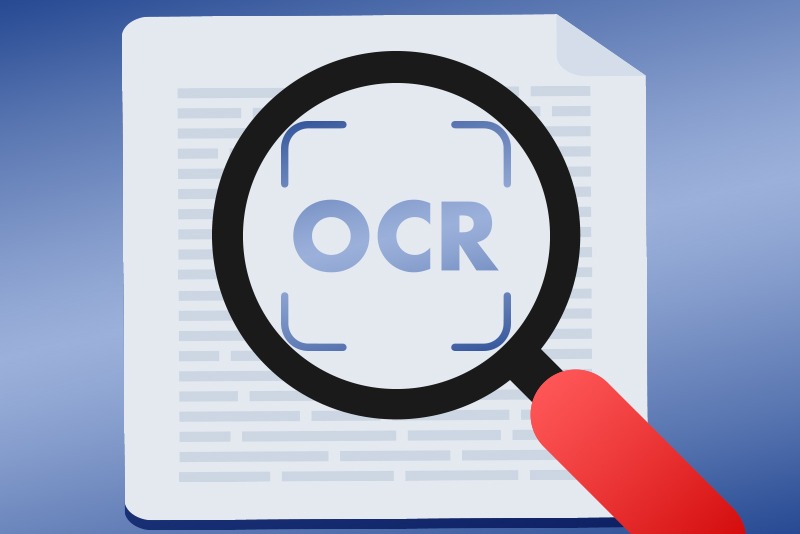In the ever-evolving landscape of the banking industry, technology plays a pivotal role in shaping the way financial institutions operate. One such technology that has gained significant prominence is Optical Character Recognition (OCR). OCR technology has revolutionized various aspects of banking, from document processing and data extraction to enhancing security measures. In this article, we will explore the application of OCR in the banking sector, its benefits, and the ways it enhances both security and efficiency.
Understanding Optical Character Recognition (OCR)
What is OCR? OCR, short for Optical Character Recognition, is a technology that converts different types of documents, such as scanned paper documents, PDF files, or images captured by a digital camera, into machine-readable text data. It does this by analyzing the patterns of light and dark in the scanned image and identifying characters.
Character Recognition OCR software identifies and recognizes characters, including letters, numbers, and special symbols, from the visual representation in the document. This extracted text can then be processed, edited, or stored electronically.
OCR in Document Processing
Automated Data Entry In the banking sector, countless documents are processed daily, ranging from customer forms and checks to legal agreements. OCR automates the data entry process by extracting information from these documents accurately and quickly. This significantly reduces the risk of manual errors and saves valuable time.
Document Classification OCR can classify documents based on their content, allowing banks to categorize and organize documents efficiently. For example, loan applications, account statements, and invoices can be automatically sorted for streamlined document management.
Enhancing Security Measures
Identity Verification Identity theft and fraudulent activities are pressing concerns in banking. OCR can be employed in document verification processes to authenticate customer identities. It can compare scanned documents, such as passports or driver’s licenses, with existing records to detect discrepancies or forgeries.
Transaction Security OCR technology can enhance transaction security by reading and verifying characters from handwritten checks. This ensures that the recipient’s account information matches the intended payee, reducing the risk of fraudulent transactions.
Secure Document Storage OCR enables the conversion of paper documents into digital formats, facilitating secure and encrypted storage. Digital documents are less susceptible to physical damage or unauthorized access, thus safeguarding sensitive information.
Improving Efficiency
Faster Data Retrieval With OCR, retrieving specific information from vast document archives becomes significantly faster and more efficient. This streamlines tasks like customer inquiries, compliance checks, and audits.
Reduced Manual Workloads OCR reduces the need for manual data entry and sorting, allowing bank employees to focus on more complex tasks that require human expertise. This leads to increased overall efficiency and productivity.
Enhanced Customer Experience Faster document processing and reduced errors result in improved customer experiences. Customers benefit from quicker responses to inquiries and faster transaction processing.
Regulatory Compliance
Know Your Customer (KYC) Regulatory requirements, such as KYC and Anti-Money Laundering (AML) regulations, necessitate thorough customer identity verification. OCR technology ensures compliance by accurately extracting and cross-referencing customer data from various documents.
Data Privacy Data privacy laws, like the General Data Protection Regulation (GDPR), require banks to handle customer information with care. OCR contributes to compliance by securely managing and accessing sensitive data while minimizing human errors.
Future Developments and Challenges
Machine Learning Integration The future of OCR in banking lies in machine learning and artificial intelligence. These technologies enable OCR systems to continually improve character recognition accuracy and adapt to evolving document formats.
Challenges of Handwriting Recognition While OCR technology excels at printed text recognition, handwriting recognition remains a challenge due to its variability. However, ongoing research and development aim to overcome this obstacle, potentially expanding OCR’s applications.
Cybersecurity Concerns As OCR becomes more integral to banking operations, the need for robust cybersecurity measures to protect the integrity of OCR systems and the sensitive data they handle becomes paramount.
Conclusion
OCR technology has become a cornerstone of efficiency and security in the banking sector. Its ability to swiftly and accurately process documents, verify identities, and enhance data security has transformed the way financial institutions operate. As OCR continues to evolve, integrating machine learning and addressing challenges like handwriting recognition, it is poised to play an even more significant role in shaping the future of banking, ultimately benefiting both financial institutions and their customers. In a rapidly changing digital landscape, OCR stands as a testament to the power of technology in driving progress and innovation in the banking industry.

